
Jeux de construction
Empilable en bois, tour eiffel.
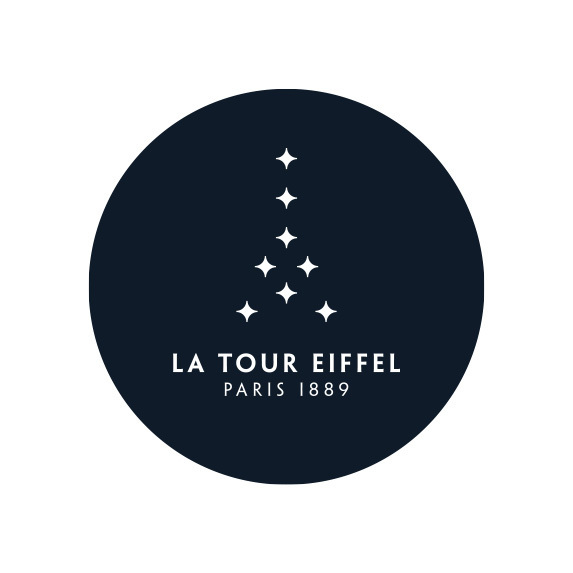
Vilac est très fier de ce partenariat avec la Tour Eiffel qui nous a confié ce projet conçu en collaboration avec une jeune designer pleine de talent. Un empilable en bois amusant pour reconstituer la Tour Eiffel parée de belles couleurs ou pour la déstructurer suivant l'imagination de chaque enfant.
Produits associés, perles en bois, potager, jouet d’éveil en bois, maison des boules illustrée, cubes sonores, la savane, jeu d’éveil en bois, popotte minus, jouet d’éveil, j'apprends à compter les légumes, cubes en bois les contes.
- Jouez Engagé
- Conseils d'experts
- FAQ & Contact
- Points de vente
- Livraison France, Belgique, Espagne, Italie & Allemagne
- Frais de port offerts dès 40€ d'achats !
- JOUETS D'ÉVEIL
- JOUETS D'IMITATION
- JOUETS DE BAIN
- IMAGINATION
- JEUX ÉDUCATIFS
- JEUX DE SOCIÉTÉ
- JEUX D'ADRESSE
- TABLEAUX & MOBILIER
- LOISIRS CRÉATIFS
- Jouets à bascule, porteurs & chariots
- Jouets à promener & à pousser
- Manipulation & encastrement
- Cubes & pyramides
- Trains & véhicules
- Bouliers, loopings & panneaux d'activités
- Puzzles en bois premier âge
- Jouets musicaux
- Jouets magnétiques
- Formes & couleurs
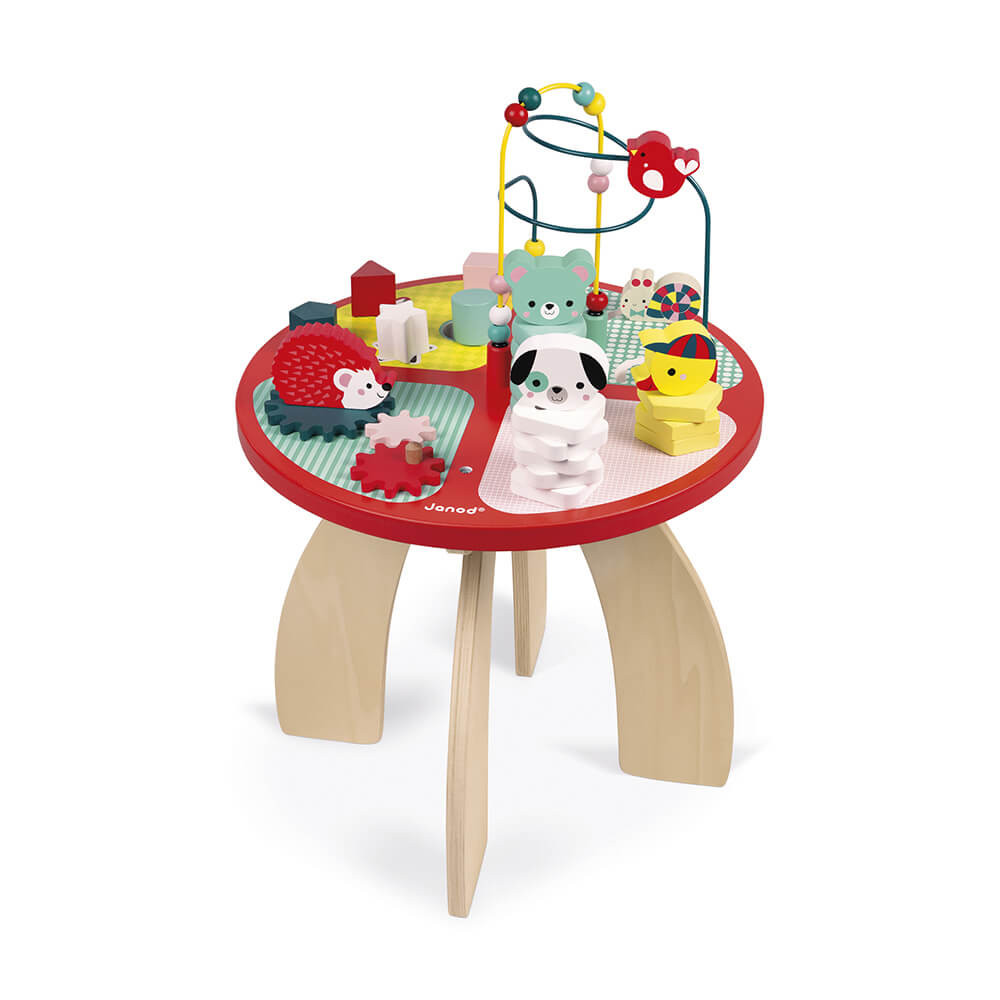
- Cuisines, dinettes & marchandes
- Établis, outils & bricolage
- Accessoires poupons, poupées & ménage
- Imitation métiers
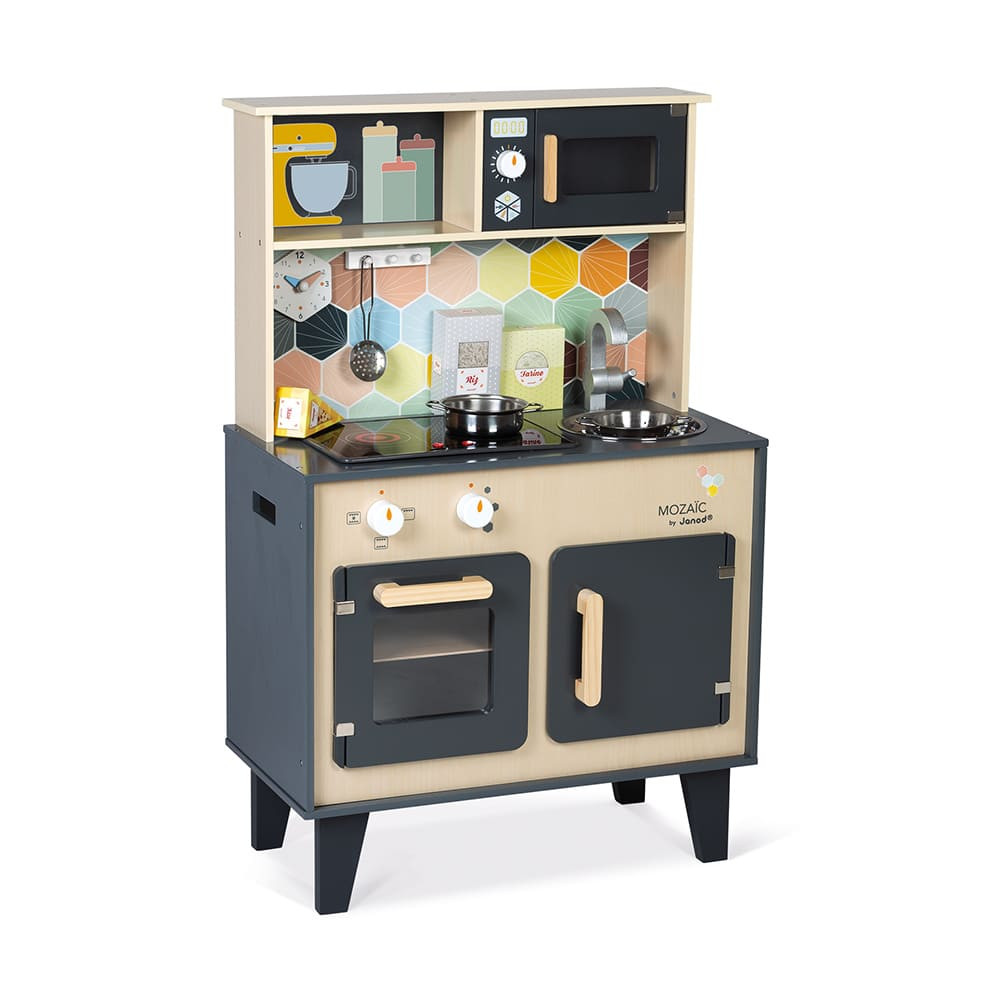
- Puzzles 20 à 49 pièces
- Puzzles 50 à 149 pièces
- Puzzles 150 à 499 pièces
- Puzzles 500 à 2000 pièces
- Puzzles éducatifs
- Puzzles magnétiques
- Puzzles fabriqués en France
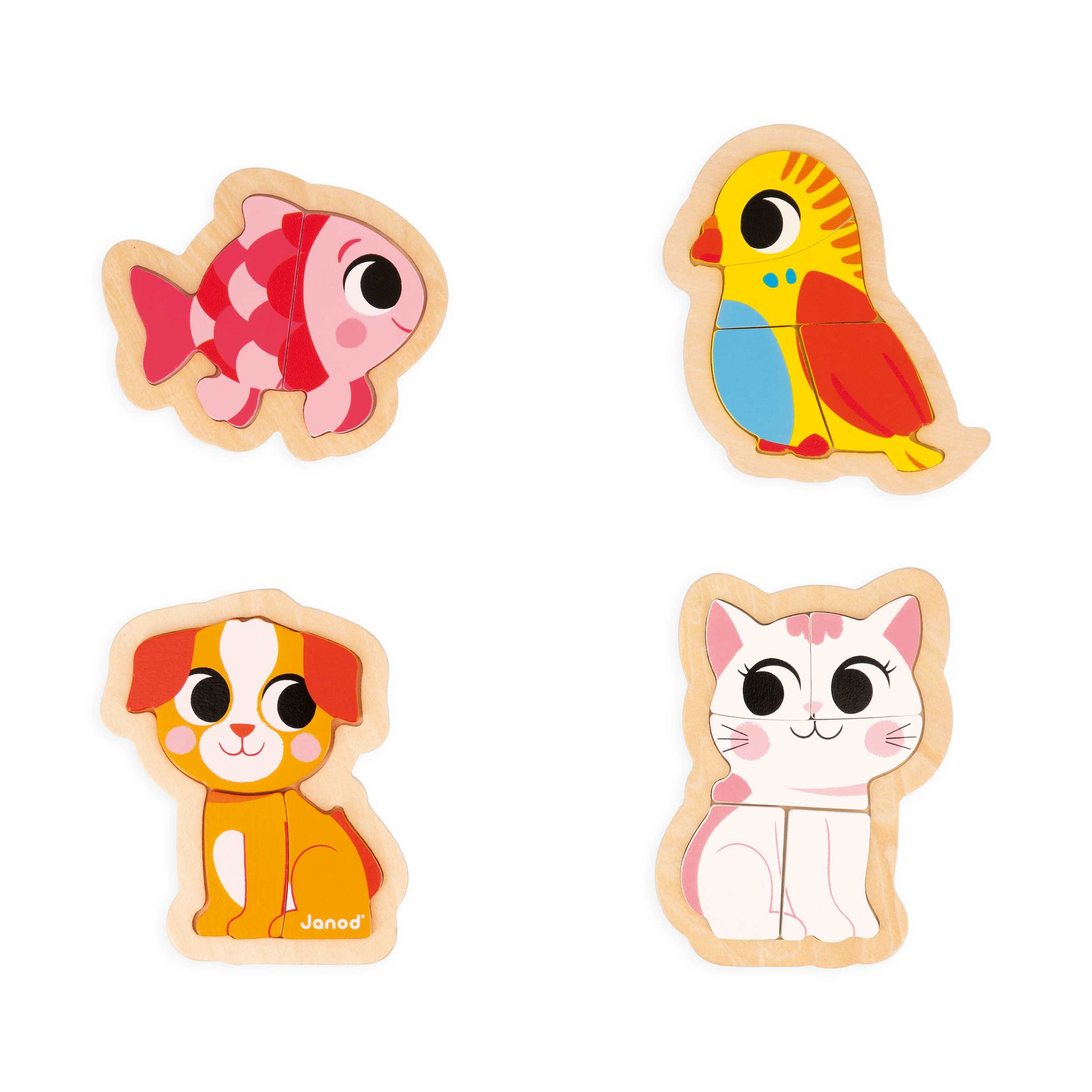
- Livres de bain
- Gicleurs & éponges de bain
- Coloriages & jeux de pêche à la ligne
- Puzzles & jeux de mémo pour le bain
- Cubes & seaux de bain
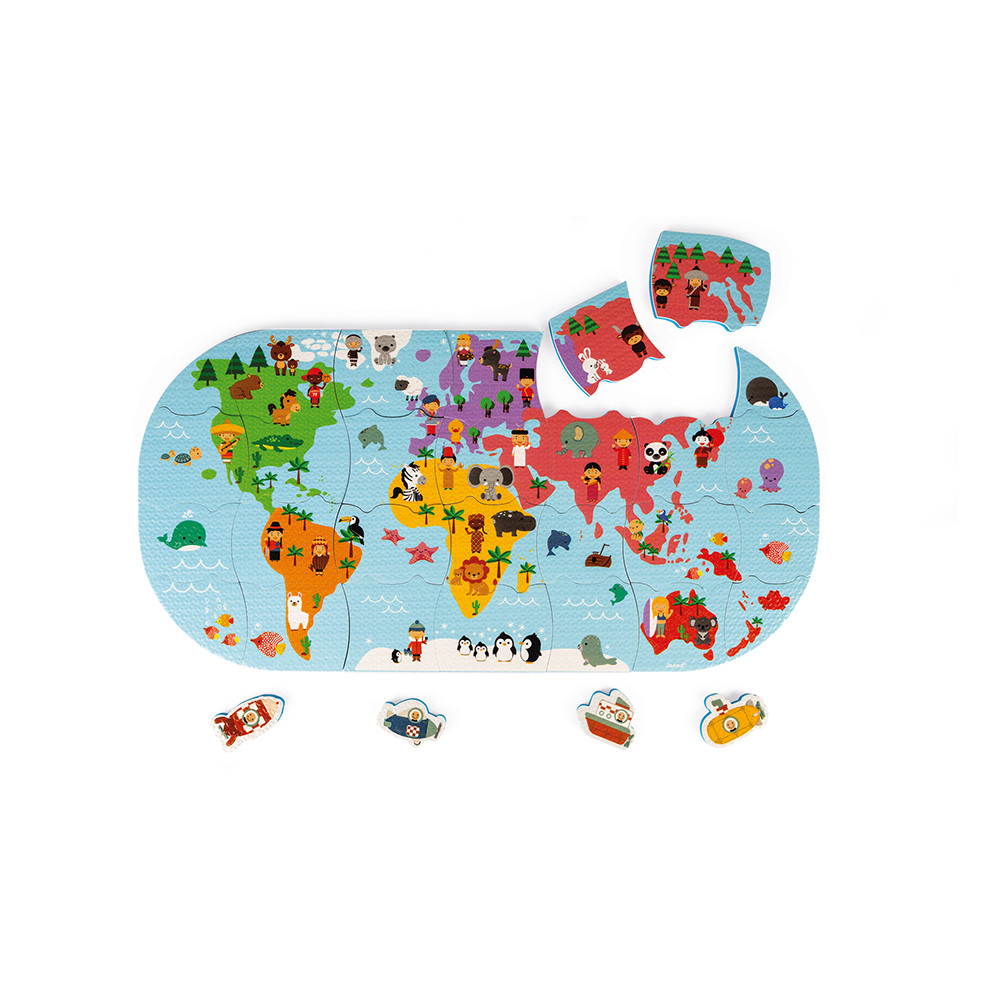
- Tracteurs & animaux de la ferme
- Véhicules, garages & voitures
- Caserne & véhicules de pompiers
- Trains & circuits
- Maison de poupées
- Lampes à histoires
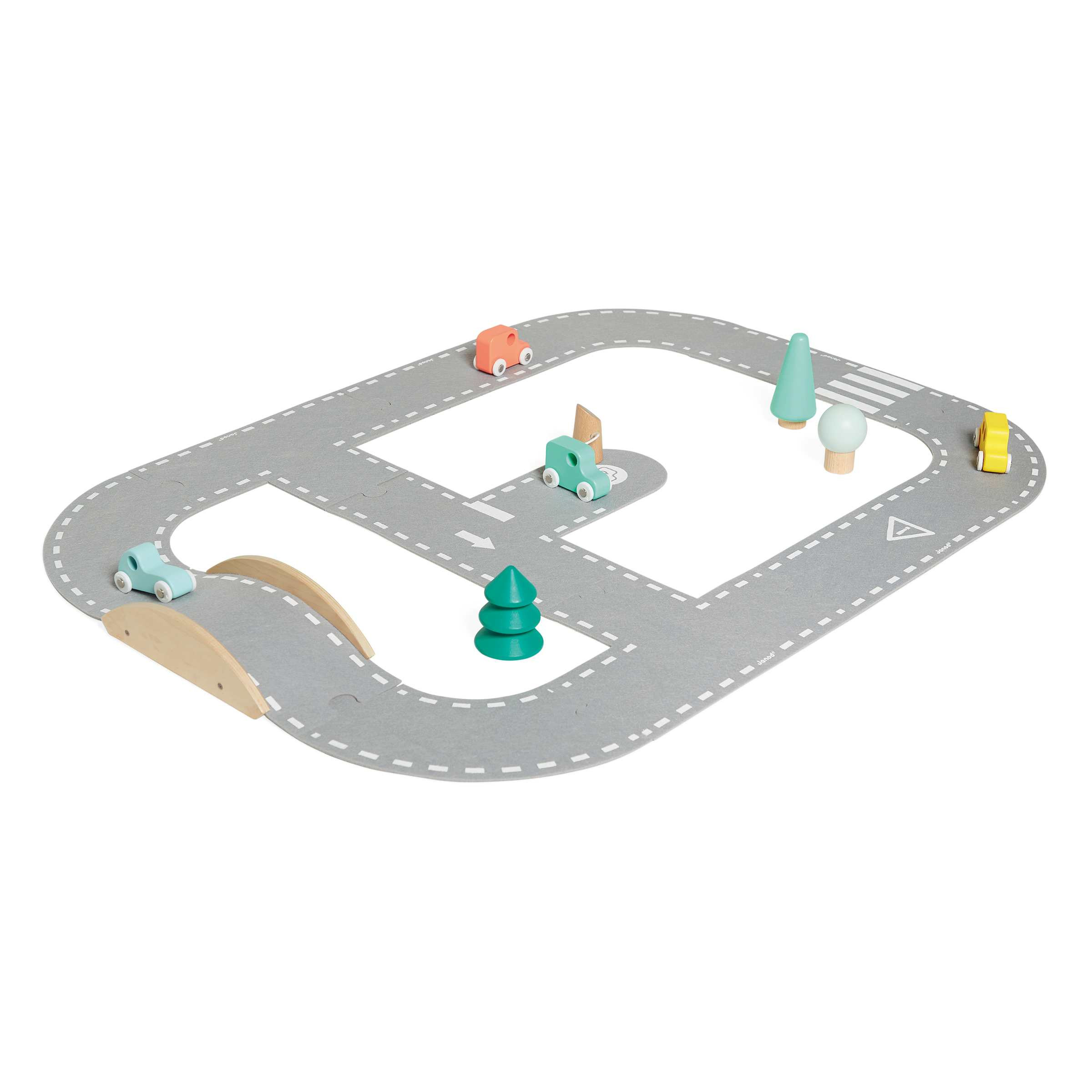
- Jeux éducatifs magnétiques
- Jeux éducatifs chiffres & lettres
- Jeux éducatifs science & géographie
Jeux de construction
- Jeux éducatifs maternelle
- Jeux éducatifs primaire

- Jeux de cartes
- Jeux de parcours
- Jeux de mémoire & d'associations
- Jeux de rapidité & de stratégie
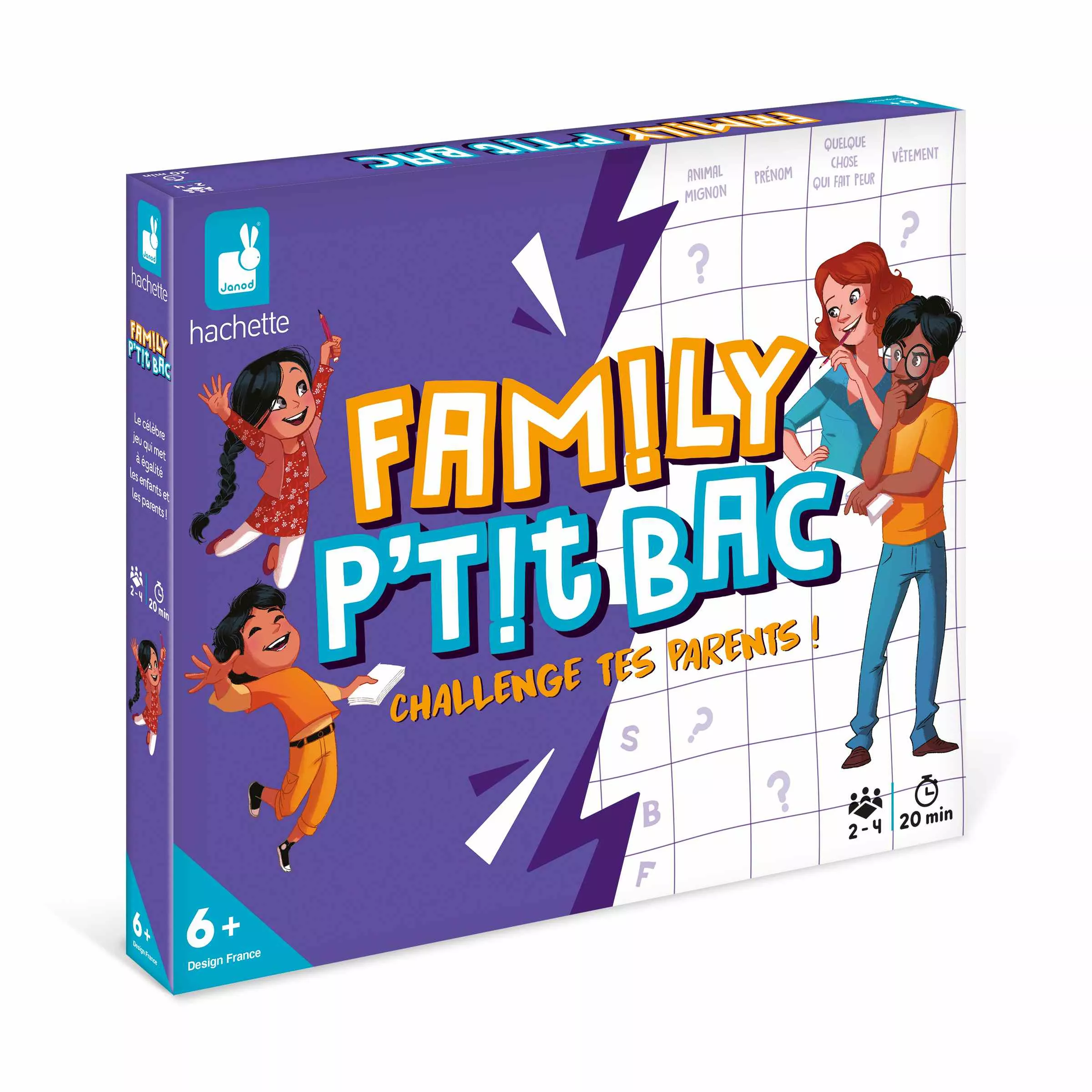
- Jeux de lancer
- Jeux de pêche à la ligne
- Planche d’équilibre & à roulettes
- Jeux d'équilibre
- Billes & toupies
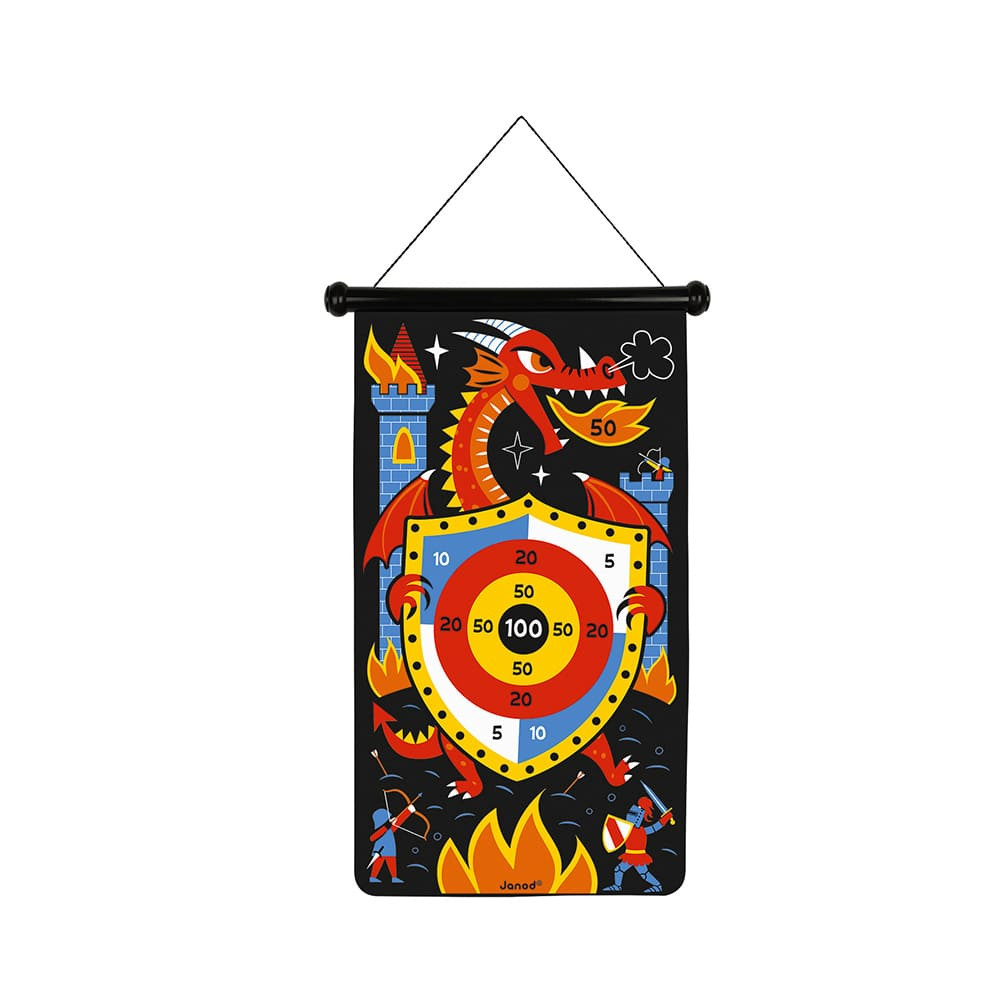
- Tableaux, ardoises & magnets
- Tables & mobilier
- Tirelires en bois
- Boîtes à musique en bois
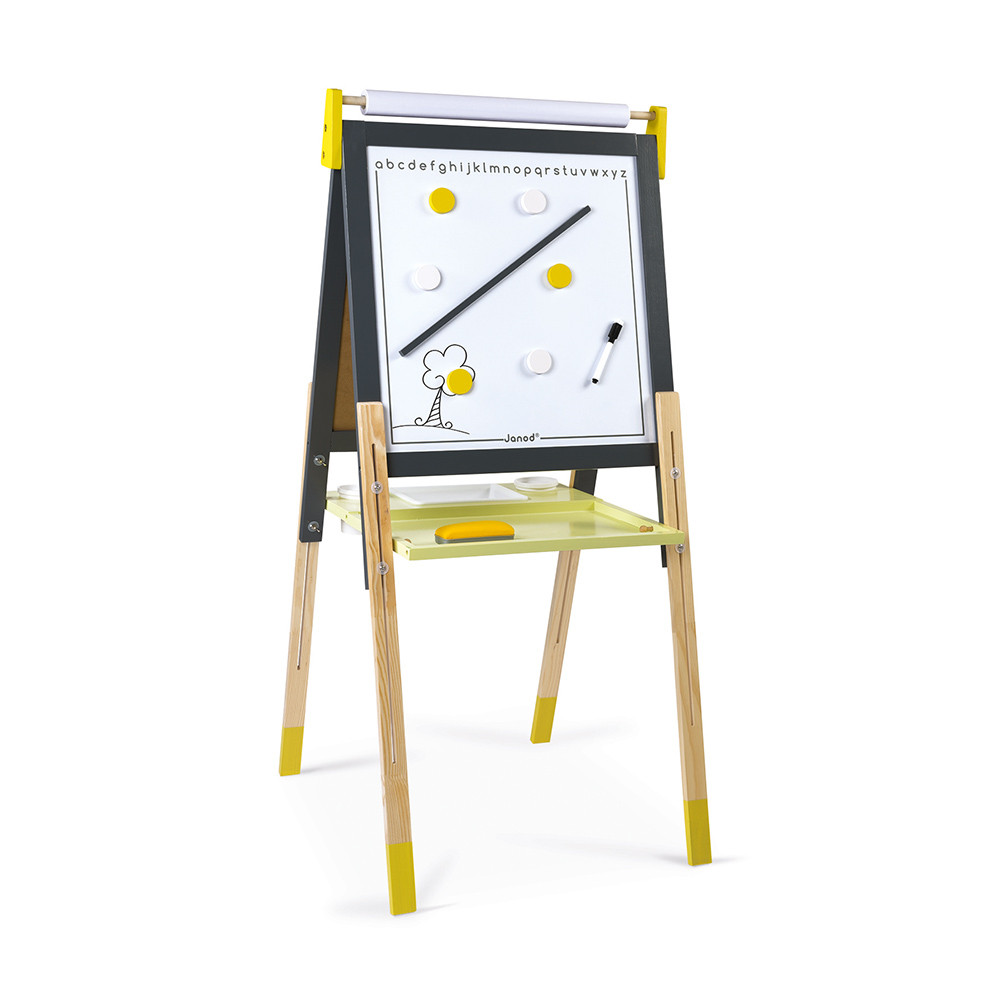
- Collection "Les Ateliers du Calme"
- Collection "Les Ateliers Bijoux" & les perles
- Collection "Les Ateliers Déco"
- Tampons & papeterie
- Mosaïques & gommettes
- Peinture par numéro & coloriage
- Crochet, tricot & laçage
- Cartes à gratter
- Sable, paillettes, dorure & strass
- Créations 3D
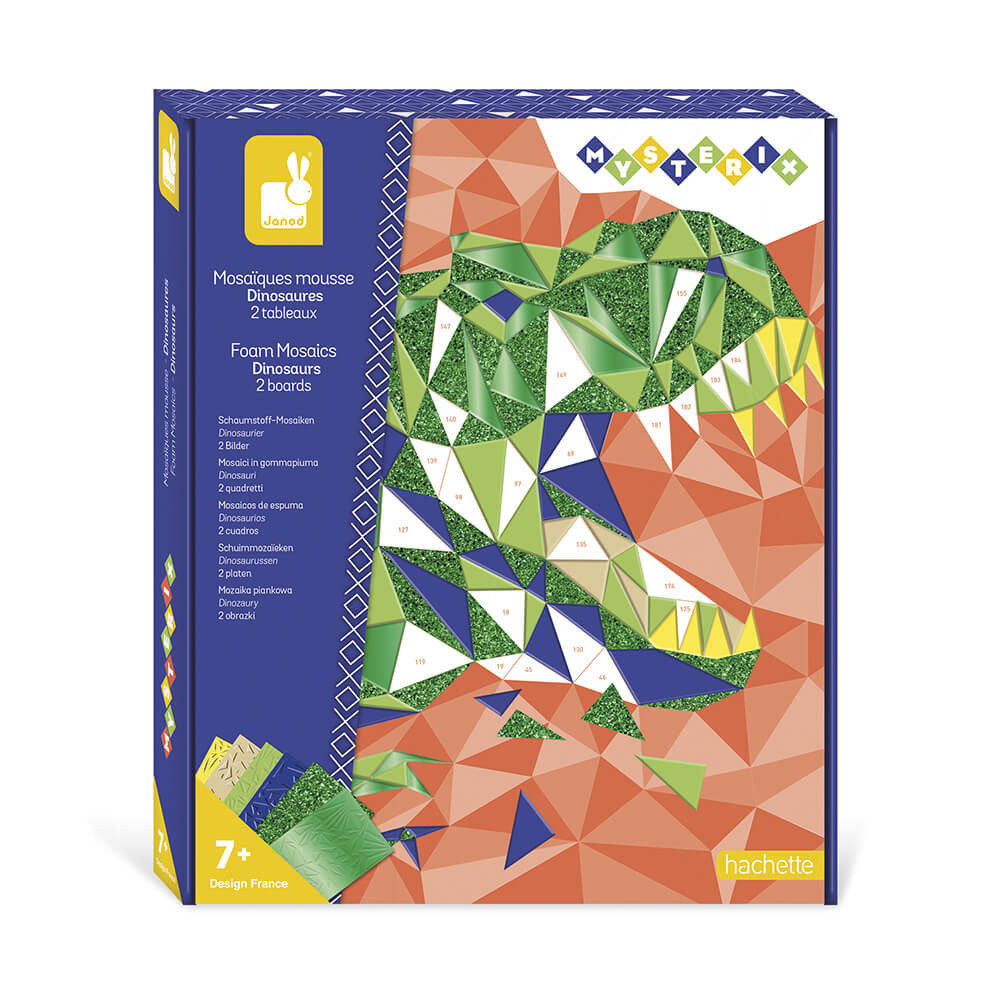
- Draisiennes & accessoires
- Sports & activités d'extérieur
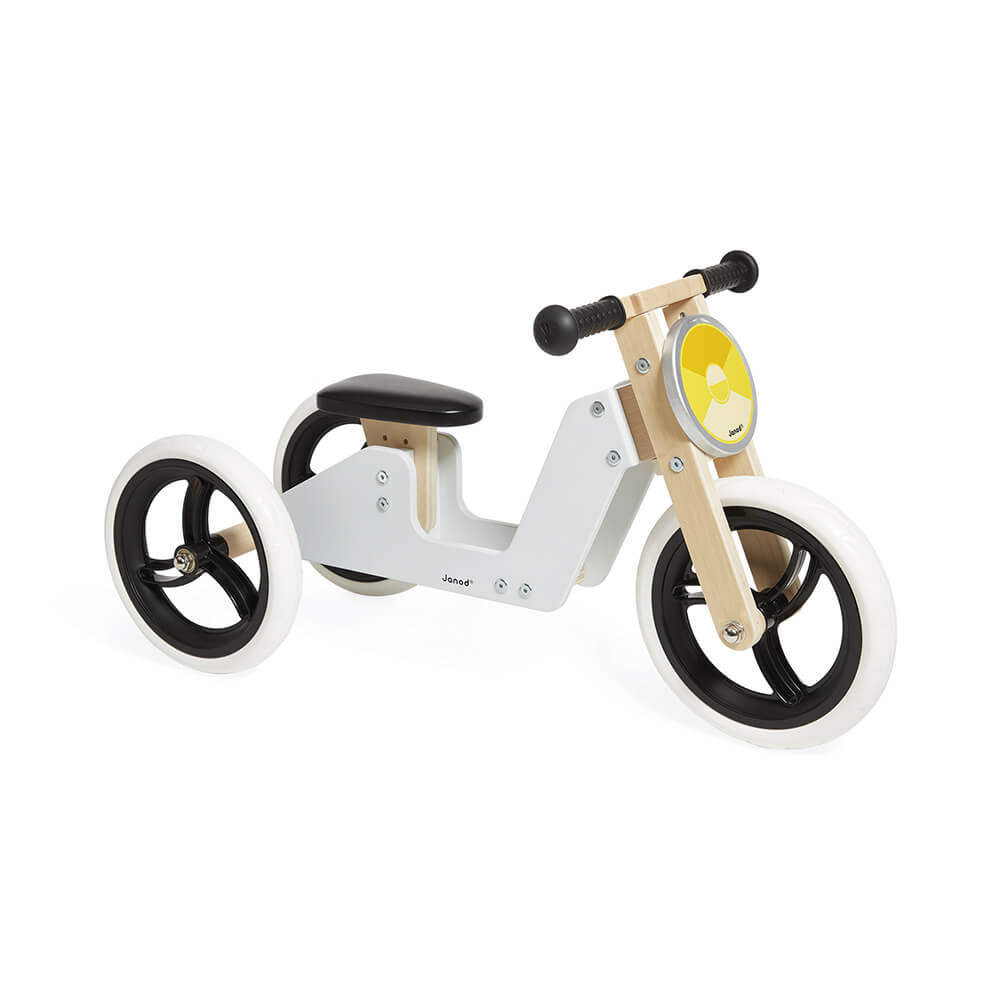
- JEUX & PUZZLES

- L'UNIVERS JANOD
Frais de port offerts dès 40€ d’achat 🎁
Expédition rapide en 24h 🚀
Vous devez avoir un compte pour pouvoir utiliser cette fonctionnalité.
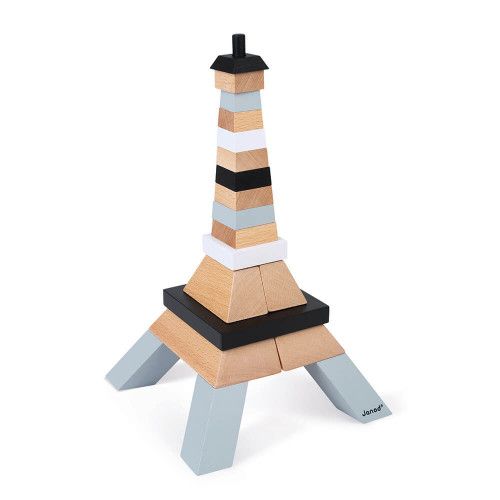
Tour Eiffel à Construire (bois)
Réf. J08303
◦ Donner vie à sa propre Tour Eiffel !
◦ Bois certifié FSC®
◦ Accessible dès 4 ans
- Construire & concevoir
- Imaginer inventer & créer
Ce jouet est en rupture, renseignez votre e-mail pour être alerté de son retour en stock.
Qui n’a pas rêvé un jour de construire sa propre Tour Eiffel, ce monument emblématique connu dans le monde entier ? Avec ce set de construction, l’enfant pourra inventer de nombreuses histoires après avoir assemblé sa propre tour en bois massif grâce aux cartes modèles qui détaillent les étapes de construction ! Composée de 21 pièces, elle trouvera également sa place comme objet de décoration dans une chambre. Cette activité est parfaite pour développer l'imagination et la construction visuo-spatiale. Peinture à l’eau. Cette tour Eiffel est fabriquée en bois certifié FSC®, issu de forêts gérées durablement. A partir de 4 ans.
.png)
- Produit à monter soi-même
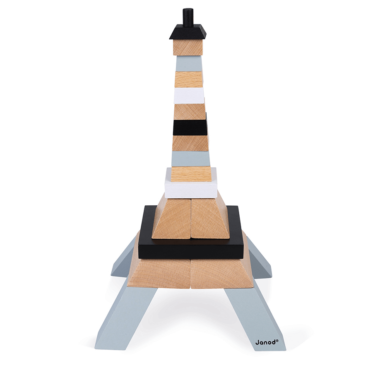
Construis ta propre Tour Eiffel, monument caractéristique de la ville de Paris !
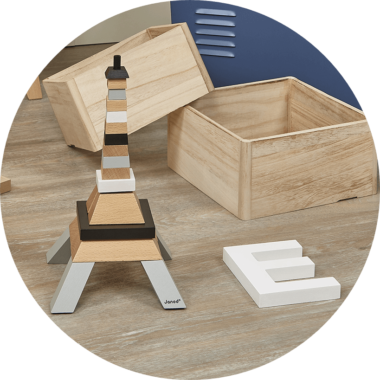
Composé de 21 pièces en bois, l'édifice saura trouver sa place parmi les cubes et autres figurines des enfants, pour imaginer de folles histoires.
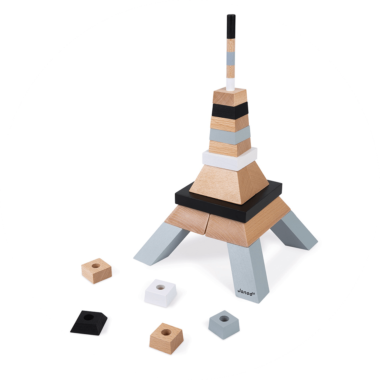
Une jolie construction en bois à recomposer à l'infini, ou à exposer dans sa chambre pour un effet "Waouh" !
Jeu Totem Tropik
Voici un magnifique jeu d'observation et de réflexion en bois pour les enfants à partir de 3 ans ! Direction les tropiques, ses couleurs chaleureuses et ses animaux fantastiques pour une partie de Totem, jeu éducatif où il faut faire preuve de concentration ! Le principe est simple, reconstituer sur les 3 tiges en bois les modèles des 6 cartes imprimées recto/verso à l'aide des 52 éléments mis à disposition. Attention, il y a des pièces de toutes sortes, de toutes formes et de toutes couleurs ! Il faudra trouver la bonne et la placer dans le bon sens. Et pourquoi ne pas laisser libre cours à son imagination pour créer des totems plus originaux les uns que les autres. Au détour des impressions colorées, votre enfant retrouvera, bien cachés, des animaux de la jungle comme le singe, le perroquet ou encore le crocodile. Jouet en bois et en carton FSC®.
Jeu d'Equilibre Ecosystème - Partenariat WWF®
L'équilibre de l'écosystème est fragile dans la forêt, un petit dérèglement et tout bascule ! Expliquons l'importance de chaque espèce grâce à ce jeu d'équilibre en bois ! Qu'ils sont charmants tous ces animaux dans leur environnement de prédilection ! Mais pour vivre en harmonie, chacun doit être à sa place dans son écosystème. Sous la terre, dans le socle, on retrouve les vers et les feuilles, puis en surface sur le plateau, on installe 12 animaux mais sans les faire tomber ! Ce jeu représente notre écosystème, placé sur un balancier, il rappelle l'équilibre entre chaque espèce végétale et animale qui nous entoure. Ce jeu est idéal pour développer la dextérité des enfants à partir de 2 ans tout en les sensibilisant à l'importance de chaque être vivant. Les personnages de ce jeu d'équilibre sont adorables et les couleurs toutes douces ! Jouet en bois certifié FSC® (bois issu de forêts gérées durablement). Jouet développé en collaboration avec WWF®. Janod soutient les efforts du WWF® pour protéger l’environnement et la biodiversité grâce à une gamme de jouets fabriqués à partir de matériaux plus durables. À travers cette gamme, nous visons à inspirer et à permettre à la jeune génération de se mobiliser pour la faune et la nature.
.png)
Set de Construction 60 pièces (bois)
Concentration et motricité fine en action grâce à ce baril de 60 pièces de construction en bois de 6 couleurs différentes. Il permettra aux enfants à partir de 4 ans de créer les édifices les plus fous au gré de leur imagination. A plat ou en volume, de multiples possibilités s’offrent aux créateurs les plus inventifs : tours, maisons, animaux, etc... 8 modèles sont inclus. Ce set est compatible avec la référence 100 pièces (J08301) pour étendre encore plus les possibilités de construction. Cette activité est idéale pour développer la concentration et la construction visuo-spatiale. Les blocs en bois sont peints avec de la peinture à l’eau. Les pièces mesurent 8 x 1 x 2 cm. L'emballage Baril est super pratique pour pouvoir ranger toutes les pièces une fois le jeu terminé. Contenu : 60 pièces de construction, 4 cartes modèles recto verso. Bois massif Hêtre certifié FSC®, issu de forêts gérées durablement.
Votre navigateur ne supporte pas javascript !

- Retour accueil
- Vous êtes ici : Blog Actualités Construire la Tour Eiffel avec le jeu de construction TomTecT
Construire la Tour Eiffel avec le jeu de construction TomTecT
Publié par TomTecT dans Actualités le 25/08/2023 à 10:18
TomTecT est le jeu de construction ludique pour les enfants. Dans cet article, nous allons vous montrer comment construire la tour Eiffel avec TomTecT.
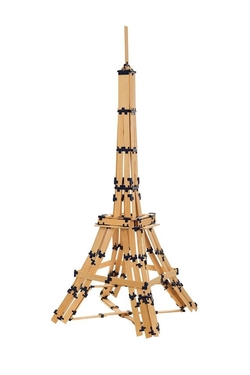
TomTecT est le jeu de construction ludique pour les enfants. Dans cet article, nous allons vous montrer comment construire la tour Eiffel avec TomTect, ce monument célèbre qui représente la France et sa capitale, Paris. Nous avons pu voir dans les articles précédents, comment construire une maison en bois avec TomTect, comment construire des animaux avec TomTect, comment construire un avion avec TomTect.
Pour cela, vous aurez besoin d’une boîte de jeu de construction TomTect, disponible directement depuis notre site internet. Vous pouvez commander en ligne et recevoir votre boîte de construction dans les plus brefs délais. Vous avez le choix entre différentes boîtes de construction par exemple :
TomTect 1000 TomTect 1000 est la boîte qu’il vous faut ! 5 longueurs, des charnières "double" et "triple" qui permettent de chevaucher deux pièces en bois et ainsi d’adapter les longueurs pour faire des combinaisons illimitées de petites et grandes structures, vous pouvez même faire un pont de plus de 2m30. Pour construire la tour Eiffel, il est préférable d’utiliser la TomTect 1000. TomTect 500 Toutes les longueurs de planches sont disponibles dans la TomTect 500. Les nouveaux "triple charnières" vous permettent de relier trois planches ensemble. Vous pourrez donc créer et imaginer de nombreuses formes et objets. Tomtect 420 Avec ce coffret, vous pouvez créer des multitudes de structures comme du mobilier en passant de la chaise, à la table, au banc jusqu’à d’autres, plus complexes, tels un dragon, un moulin ou une maison. Tomtect 190 multi longueurs
C’est la petite version du TomTecT 1000. On peut l’utiliser seule ou en complément avec la TomTecT 180 ou encore la TomTecT 420, ne contenant qu’une seule longueur de planchettes et pas de pinces double contrairement à TomTecT 1000. TomTect 180 Avec TomTect 180 vous allez pouvoir créer des animaux, des navires, des avions, mais aussi des multitudes de formes.
Construire la tour Eiffel avec le jeu TomTect :
Pour construire la tour Eiffel, il faudra réaliser plusieurs étapes. Nous avons réalisé des illustrations (voir ci-dessous) pour vous aider à créer en famille et avec vos enfants, votre propre tour Eiffel, afin de l’exposer dans votre maison fièrement.
Voici les étapes pour construire la Tour Eiffel :
Étape 1 et 2 : Construire les 4 poutres du niveau inférieur de la Tour Eiffel.
Étape 3 : Construire le niveau 1 de la Tour Eiffel
Étape 4 : Relier les constructions de l'étape 1, 2 et 3
Étape 5 : Création de la terrasse du premier étage de la Tour Eiffel
Étape 6 : Construire la poutre supérieure de la tour eiffel
Étape 7 : Rattacher la poutre supérieur avec la partie inférieure de la tour eiffel
Étape 8 : Création du second niveau de la Tour Eiffel
Dernière étape : Construire le 3ème étage de la Tour Eiffel
Voilà, vous venez de construire la tour eiffel avec le jeu de constuction TomTect.
Partager sur les réseaux sociaux
Poster un commentaire
Se connecter à son compte
Vous n'êtes pas encore membre ? Créer un compte
Je n'ai pas de compte, je m'inscris
J'ai déjà un compte, Se connecter

LE CONSTRUCTEUR EIFFEL - LA TOUR DE 300 METRES vers 1889
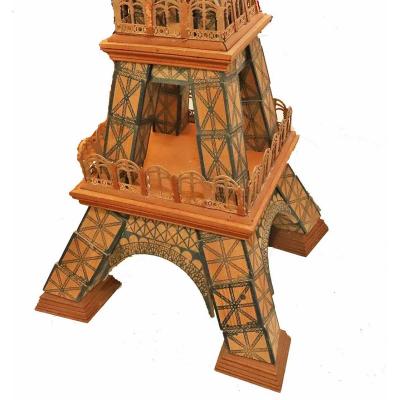
Description de l’antiquite :
Voir plus d'objets de cet antiquaire.
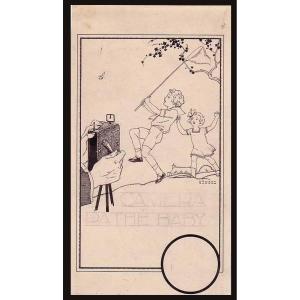
Antiquités - Jouets anciens

Proantic utilise un cookie pour analyser le traffic et améliorer son service avec Google Analytics. Les données envoyées à Google Analytics (fréquence de visite du site et pages visitées) sont anonymes. Aucun autre cookie ne traque votre activité, vos données personnelles ne sont pas collectées. Merci de votre aide pour nous permettre de mieux comprendre comment Proantic est utilisé.
L'orangerie Jouets et Jeux Anciens

Thank you! Your submission has been received!
Oops! Something went wrong while submitting the form
L'orangerie

The Construction of the Eiffel Tower
Discover how the eiffel tower was built, eiffel tower.
Work began in January 26th, 1887 with the digging of the Tower's foundations, which were laid in four months.
Travaux de construction de la tour Eiffel - Poutrelles de base d'un pilier - Juillet 1887 by © Parisienne de photographie - Jacques Boyer / Roger-Viollet Eiffel Tower
The work started on July 1st, 1887 to end twenty-one months later.
All the elements were prepared in Eiffel’s factory in Levallois-Perret, on the outskirts of Paris. Each of the 18,000 pieces used to construct the Tower was specifically designed and calculated, traced out to an accuracy of a tenth of a millimetre and then put together to form new pieces, each measuring around five metres.
On site, a team of builders, who had worked on the great metal viaduct projects, was responsible for the 150 to 300 workers who assembled this gigantic Meccano set.
La tour Eiffel - Un poste de riveurs by © Collection tour Eiffel Eiffel Tower
All the metallic pieces on the Tower were fixed by rivet, this was a well known technique at the time of the construction.
First, the pieces were assembled on site using bolts, later to be replaced one by one with thermally assembled rivets, which contracted during cooling thus ensuring a very tight fit.
A team of four men was needed for each rivet assembled: one to heat it up, another to hold it in place, a third to shape the head and a fourth to beat it with a sledgehammer. Only a third of the 2,500,000 rivets used in the construction of the Tower were inserted directly on site.
The Tower is built with wooden scaffolds and small hoists directly fixed to the Tower. Image taken in January 1888.
A total of 12 temporary wooden scaffolds (30 m in height) and four larger scaffolds (45 m in height) were used to assemble the first floor.
Beginning of the second floor - June 1888
Above the second floor - September 1888
Above the middle floor - December 1888
Boulonnage du joint de deux arbalétriers (L'Exposition de Paris) by © Collection tour Eiffel Eiffel Tower
The journalist Emile Goudeau described the construction site at the beginning of 1889 accordingly: “A thick cloud of tar and coal smoke seized the throat, and we were deafened by the din of metal screaming beneath the hammer. Over there, ..."
"... they were still working on the bolts: workmen with their iron bludgeons, perched on a ledge just a few centimetres wide, took turns at striking the bolts (these in fact were the rivets). One could have taken them for blacksmiths contentedly beating out a rhythm on an anvil in some village forge, except ..."
"... that these smiths were not striking up and down vertically, but horizontally, and as with each blow came a shower of sparks, these black figures, appearing larger than life against the background of the open sky, looked as if they were reaping lightning bolts in the clouds.”
La tour Eiffel prise du Champ-de-Mars - Exposition universelle de 1889 by © Parisienne de photographie - Neurdein / Roger-Viollet Eiffel Tower
It took just two years, two months and five days to build the Eiffel Tower. Construction work began in January 1887 and was finished on 31 March 1889.
A record speed considering the rudimentary means available at that time. The assembly of the Tower was a marvel of precision, as all the chroniclers of the period agreed.
On the narrow platform at the top, Gustave Eiffel was awarded the Légion d'Honneur.
The Tower's construction in a few figures: 18,038 metal parts ; 5,300 workshop drawings ; 50 engineers and draughtsmen ; 150 workers employed at the Levallois-Perret factory ; between 150 and 300 workers on the construction site ; 2,500,000 rivets ; 7,300 tonnes of iron ; 60 tonnes of paint.
The Eiffel Tower was now ready to receive its first visitors.
Conception—Société d'Exploitation de la Tour Eiffel
The birth of the Eiffel tower
The eiffel tower in 1900, the eiffel tower's inauguration and first visitors.
%20(5).jpg)
L'Épopée Controversée de la Tour Eiffel : Retour sur les Oppositions Historiques à sa Construction
La Tour Eiffel, symbole emblématique de la France et de Paris, est admirée par des millions de visiteurs chaque année. Cependant, ce monument emblématique qui suscite l'admiration aujourd'hui était autrefois au centre de controverses passionnées lors de sa construction. Dans cet article, nous explorerons les oppositions historiques à l'édification de la Tour Eiffel et découvrirons comment elle a finalement triomphé pour devenir un trésor national.

La genèse de la controverse
Lorsqu'il a été décidé de construire une tour en fer pour l'Exposition Universelle de 1889, le projet était loin de faire l'unanimité. Nombreux étaient ceux qui critiquaient cette structure en fer massif et jugée inesthétique. Certains artistes et intellectuels parisiens de l'époque, dont l'écrivain Guy de Maupassant et le peintre William-Adolphe Bouguereau, se sont publiquement opposés à la construction de la Tour, la qualifiant de "monstruosité" qui défigurerait le paysage parisien.
La polémique dans les médias
Les médias de l'époque se sont également emparés de la controverse. Les journaux ont publié des caricatures et des articles dénonçant le projet. Les critiques ont insisté sur le coût élevé de la construction et ont exprimé des inquiétudes quant à la solidité de la structure. Cependant, ces objections n'ont pas réussi à dissuader Gustave Eiffel et ses collaborateurs de poursuivre leur vision audacieuse.

Les défis de la construction
La construction de la Tour Eiffel a été une prouesse d'ingénierie sans précédent pour l'époque. Les ouvriers ont dû travailler dans des conditions dangereuses et exigeantes pour ériger cette structure monumentale. En dépit des difficultés, Gustave Eiffel et son équipe ont persévéré, et la tour a commencé à prendre forme.
Un triomphe inattendu
Malgré les oppositions et les critiques, la Tour Eiffel a fini par s'imposer comme l'une des réalisations architecturales les plus emblématiques au monde. Lorsqu'elle fut inaugurée à l'Exposition Universelle de 1889, elle attira l'admiration et l'émerveillement du public, faisant taire bon nombre de ses détracteurs.
Un héritage inébranlable
Au fil des décennies, la Tour Eiffel est devenue un symbole de la France et un emblème incontournable de Paris. Sa silhouette élégante et ses lumières scintillantes en font une attraction touristique incontournable. Aujourd'hui, il est difficile d'imaginer Paris sans la Tour Eiffel qui est devenue l'une des structures les plus photographiées au monde.
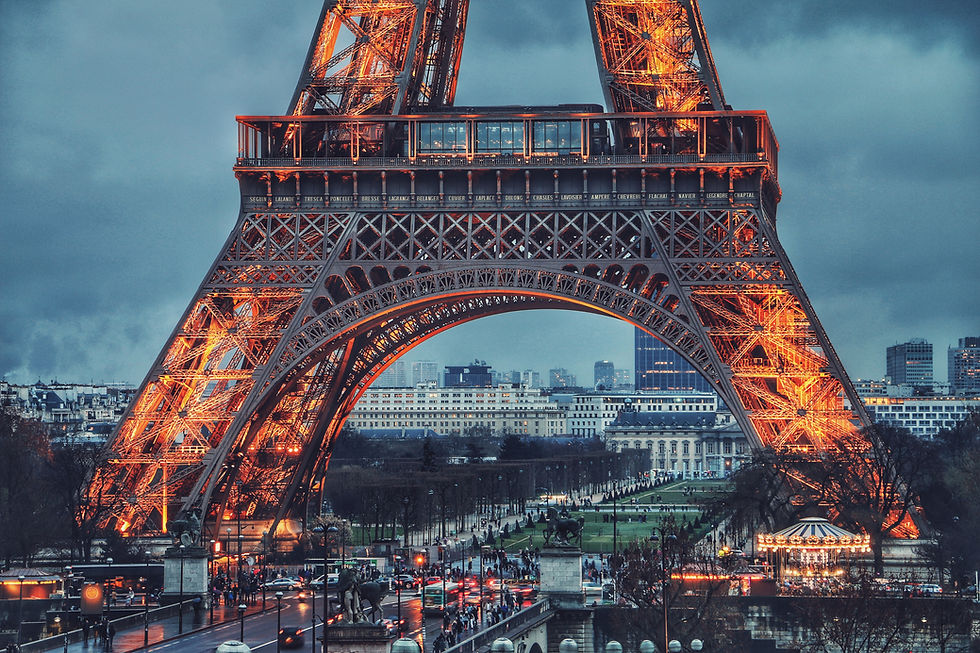
L'histoire de la Tour Eiffel est un rappel puissant que les grandes réalisations ne sont pas toujours accueillies avec enthousiasme dès le début. Les oppositions historiques à sa construction illustrent à quel point le chemin vers l'admiration et la reconnaissance peut être semé d'embûches. Cependant, l'audace et la persévérance de Gustave Eiffel et de son équipe ont permis de créer un monument intemporel qui perdure et continue de fasciner les générations successives. La Tour Eiffel reste ainsi un témoignage de la grandeur humaine et de la détermination à transformer les idées controversées en symboles emblématiques.
Posts récents
JO 2024 : QR code, zones restreintes, tout comprendre
Quels sont les trois piliers de l'économie circulaire ?
JO 2024 : Guide complet pour obtenir vos billets

The rooms and halls of the Grand Peterhof Palace
#Attractions #Museums #Peterhof #Peter I #Sightseeing
The Grand Palace along with the large fountain cascade in front of it is the main attraction of Peterhof and architectural dominant of the whole Palace and Park complex. In XVII – XIX centuries the Grand Peterhof Palace was the main ceremonial residence of Russian tsars, which hosted important events and celebrations, receptions, balls and masquerades. This monumentally looking building has about 30 rooms inside.
The Grand Staircase
The Guest Entrance was arranged in the Western part of the building and involved the Grand staircase created by Bartolomeo Rastrelli in 1751. The decoration of the Grand staircase included gilded statues and carved bouquets, caryatids and rocaille (that is made in the Rococo style) cartouches. The staircase leads guests to the enfilade which is a series of state rooms for official purposes.
• The Chesma hall is a waiting room located in front of the Throne room were officials were waiting for the start of the reception. Paintings by the German painter Jacob Hackert serve as the main decoration of the hall. They depict the most dramatic episodes of the Chesma battle in which Russian fleet headed by count Alexei Orlov defeated Turkish fleet.
• The Throne room is the most spacious one, designed for receptions, balls and concerts, with an overall area of 330 sq.m. Originally this hall shone in its splendor, but in 1777 it was decorated in a classic and more modest style under the project of Yury Felten
• The Audience room was intended for small receptions of the Empress Elizabeth. The design was done by Rastrelli and became one of the best works of the architect.
“According to a legend, Elizabeth ordered Rastrelli to use as much gold in the room design as possible, because the apartment was used for the reception of noble merchants representatives, who, in the opinion of the Empress, admired gold”
• In the eighteenth century The Dance hall was known as The Merchants hall and its spacious area of 270 sq.m. occupied most of the Western half of the Grand Peterhof Palace. The windows are arranged in two tiers here and numerous mirrors and paintings are used as decorations. Parquet is made of dark and light oak, maple and walnut. According to a legend, Elizabeth ordered Rastrelli to use as much gold in the room design as possible, because the apartment was used for the reception of noble merchants representatives, who, in the opinion of the Empress, admired gold.
• White dining room was meant for festive meals and was originally designed by Bartolomeo Rastrelli. In 1774 – 1775, Yuri Felten significantly changed the hall – the new style was the complete opposite of the previous one. Instead of the gloss of gold the interior was decorated in strict classical canons. In the center of the room there is a huge table, covered with a white tablecloth and a 30 persons porcelain set, created by the famous English master Josiah Wedgwood.
• The Painting hall is the oldest one: it was designed during the life of Peter I. It is decorated with tapestries by French masters and 16 paintings by Italian artists. Originally Nicolo Michetti and Jean-Baptiste Leblond took part in creation of the room design, but later, in the middle of the XVIII century, the hall was changed by the project of Rastrelli.
The Throne Room
Ceremonial halls are followed by the rooms of the private half, which was accessible only to a circle of confidants. It housed bedrooms, private offices and salons, designed again by Bartolomeo Rastrelli. The abundance of gilding, mirrors and paintings, suspended symmetrical arches with plafond paintings and parquet floors made of precious wood – all these details create a festive atmosphere.
Currently, the Grand Peterhof Palace is a unique Museum of history and art, whose contains about three and a half thousand exhibits, including paintings and porcelain, fabrics, unique furniture and personal belongings of the Russian rulers.
- Quick Facts
- Sights & Attractions
- Tsarskoe Selo
- Oranienbaum
- Foreign St. Petersburg
- Restaurants & Bars
- Accommodation Guide
- St. Petersburg Hotels
- Serviced Apartments
- Bed and Breakfasts
- Private & Group Transfers
- Airport Transfers
- Concierge Service
- Russian Visa Guide
- Request Visa Support
- Walking Tours
- River Entertainment
- Public Transportation
- Travel Cards
- Essential Shopping Selection
- Business Directory
- Photo Gallery
- Video Gallery
- 360° Panoramas
- Moscow Hotels
- Moscow.Info
- Top 20 Attractions
Top 20 St. Petersburg attractions and experiences
St. Petersburg has a true wealth of attractions and experiences to offer travelers, from spectacular Imperial palaces to quirky and absorbing museums, from boat trips along the city's majestic rivers and canals to walks in the footsteps of St. Petersburg's literary and artistic greats.
In fact, there's more than enough to see and do in St. Petersburg to keep visitors entertained for weeks or even months. One of the biggest challenges for independent travelers is to work out what they will actually have time to fit in to their itinerary, particularly as St. Petersburg is one of Europe's largest cities, with the historical centre alone covering several square kilometers and some of the most famous attractions located far out in the suburbs. To help you get the most out of your time in St. Petersburg, our travel writers have drawn on their own expertise and years of feedback from travelers to compile this Top 20 list of attractions and experiences.
The Hermitage (The Winter Palace)
Undoubtedly St. Petersburg's most famous visitor attraction, and universally acknowledged as one of the world's greatest treasuries of art and antiquities, the Hermitage is a name to be conjured with, and reason enough on its own for many travelers to book a trip to St. Petersburg.
The Hermitage Museum now spans several sites, but for most visitors it is the main collection in the Winter Palace that is an essential component of any St. Petersburg itinerary. Here you'll find not only centuries of European fine art and a rich collection of Greek and Roman antiquities , but also the astonishingly opulent 18th and 19th century state rooms of Russia's imperial family.
Since the summer of 2014, much of the Hermitage's renowned collection of impressionist and post-impressionist art (in terms of artistic quality, undoubtedly the highpoint of the collection) has been transferred across Palace Square to the General Staff Building , so if your main reason for visiting the Hermitage is to see the art, then you have to consider making time for the second location, possibly with a break for refreshments between the two.
Optimal: One day for the Winter Palace and General Staff Building collections.
Minimum: Two hours
Further reading
Explore the Hermitage: An introduction to St. Petersburg's greatest museum.
The Mariinsky Theatre
St. Petersburg's other internationally renowned cultural institution, and for some visitors an even greater draw than the Hermitage, the Mariinsky Theatre has profited in recent years from the financial and creative turmoils of Moscow's Bolshoi to become the undisputed preeminent musical theatre in modern Russia.
Renowned for the impeccable discipline and devotion to tradition of its ballet company, and blessed in Valery Gergiev with one of contemporary classical music's most exciting and exacting conductors, as well as international stars of ballet and opera including Ulyana Lopatkina, Diana Vishneva and Anna Netrebko, the Mariinsky Theatre is a world-class venue for ballet, opera and orchestral music.
Recent years have seen the Mariinsky spread beyond its historic home, the wedding-cake late-19th century opera house on Teatralnaya Ploshchad ("Theatre Square"), with the addition in 2006 of the Mariinsky Concert Hall, and in 2013 the long-awaited opening of the second opera and ballet stage, Mariinsky II. While most visitors will want to enjoy the rich atmosphere and ornate interiors of the main theatre, both new venues are beautifully designed inside, with state-of-the-art acoustics and stage technology, making them well worth exploring for music enthusiasts.
Optimal: As many performances as time and your budget will allow.
Minimum: At least one evening performance at the Mariinsky should be an essential component of any Petersburg itinerary.

Rivers and canals of St. Petersburg by boat
If you're visiting St. Petersburg from May to October, there are a number of ways to explore the city by boat, from taking the hydrofoil to the suburban palace and park at Peterhof to enjoying dinner and live jazz on an evening cruise along the Neva. When the weather's good, visitors should really take any opportunity to get out on the water, but even the shortest visit to St. Petersburg in summer should include one boat trip along the city's central rivers and canals.
There is a wide range of different offers available at the various quays on or near Nevsky Prospekt, with larger boats offering guided tours (some in English) and on-board refreshments, and smaller boats that you can rent by the hour, choose your own route, and bring your own food and drink. All routes through the centre take in some portion of the Fontanka and Moyka Rivers and the Griboedov and Kryukov Canals. Some also head out onto the River Neva, while around midnight most of the boats in the city offer the chance to watch the opening of the Neva's bascule bridges from the water. Whatever route you end up taking, a boat trip is a fantastic way to see St. Petersburg from a different angle, and perhaps the best possible means of getting an impression of the sheer scope of the city's architectural beauty and romance.
Optimal: If you're in the city for more than a few days, it's definitely worth taking two trips - one sightseeing tour through the centre and one to watch the bridges opening .
Minimum: A basic sightseeing tour along the rivers and canals of the centre will take just over an hour.
When it comes to visitor attractions, St. Petersburg is as famous for the Imperial palaces and parks in the suburbs as for the museums and palaces in the city centre. Among the former, Peterhof is the one we would class as absolutely unmissbale, especially in summer when the park's incredible collection of fountains is in operation.
It took Peter the Great over a decade and a few false starts before he found the right site for his summer residence. Modelled partly on Versailles, but with many features that reflected Peter's specific tastes and interests, the park was expanded under Peter's daughter, Empress Elizabeth, to greatly surpass its French antecedent in scope and grandeur. While the Grand Palace at Peterhof is less spectacular than the Catherine Palace at Tsarskoye Selo, Peterhof excels in the diversity and range of its attractions, from the charming baroque buildings of the Petrine era to the extraordinary gilded extravagance of the Grand Cascade to the catalog of gardening styles encompassed in the Upper and Lower Parks to the ever-growing number of museums housed in the various buildings on the estate.
Optimal: There is plenty at Peterhof to keep you occupied for a whole day, and the Lower Park is a great place to picnic in the summer.
Minimum: As the journey from the city centre takes at least 45 minutes, half a day is the minimum time necessary to visit Peterhof even for the briefest overview.
St. Isaac's Cathedral & Colonnade
The low-rise skyline of St. Petersburg's historic centre is dominated by the grand gold dome of St. Isaac's Cathedral, the life's work of French architect Auguste de Montferrand and the city's largest and most spectacular religious building.
Completed in 1858, St. Isaac's took over forty years to build and decorate. Its strictly European Empire-style facades and colonnades are made unique by the employment of red Karelian granite, while the interiors also meld Orthodox tradition with Catholic influence and extraordinary extravagance in the choice of materials. Different types of semiprecious stone from all over Russia form the interior walls and columns, while an abundance of original art and sculpture goes only a little way to filling the vast hall of the cathedral, designed to accommodate 14 000 standing worshipers. As well as visiting the Cathedral interiors, travelers can buy an extra ticket to climb the 300 steps up to the colonnade. From here, you can enjoy some of the best views of St. Petersburg available.
Optimal: A tour of the cathedral and colonnade should take around two hours. It's certainly worth getting an audio guide for the cathedral, and possibly for the colonnade if you are entirely unfamiliar with the lay-out of the city.
Minimum: While visiting the cathedral interiors is hardly essential if you have limited time to explore the city, the colonnade is just about the only accessible place in St. Petersburg where you can enjoy something like aerial views of the downtown, so it's well worth taking half an hour to visit.
The Peter & Paul Fortress
The place where the city of St. Petersburg began, the Peter and Paul Fortress never actually saw military action, but has fulfilled a variety of functions over its three-century history, from burial place for nearly all of the Romanov Emperors and Empresses to notorious political prison to the site of key experiments in the development of Soviet rocket technology. All of these aspects of the fortresses history are celebrated in diverse exhibitions across various buildings, and it is the ramshackle charms of these various museums and collections as much as the grandeur of the spectacular Ss. Petersburg and Paul Cathedral that make the fortress an essential visitor attraction.
Optimal: It's possible to spend the best part of a full day at the Peter and Paul Fortress, and if possible you should definitely take the time (around five hours) to visit the Peter and Paul Cathedral, explore the displays on the History of St. Petersburg in the Commandant's House and at the Museum of Cosmonautics and Rocket Techonolgy, and walk along the top of the curtain wall.
Minimum: If you're short of time, it's probably enough to pop inside the Cathedral and walk the ramparts (just over an hour).
Church of Our Saviour on Spilled Blood
While it lacks the authentic medieval charm of St. Basil's in Moscow, the Church on Spilled Blood is nonetheless one of St. Petersburg's most instantly recognizable landmarks, its riotously colorful Russian Revival architecture making a stark contrast to the elegant neoclassicism of the State Russian Museum next door. This is part of the church's charm, in that it serves to constantly remind the visitor to St. Petersburg that, despite the Italianate elegance of most of the "Golden Triangle", you are still definitely in Russia. It's extraordinary also that a monument to mark such a tragic event (the assassination of Alexander II) should be so exuberantly colorful.
Optimal: As gaudy and colorful on the inside as on the outside, the Church on Spilled Blood is worth going inside if you have time to listen through an audio guide with the story of the church's construction (just over an hour in total).
Minimum: If you're on a whistlestop tour, there's no need to set aside time for the Church on Spilled Blood, as you're bound to pass it more than once in even the shortest exploration of St. Petersburg.
Tsarskoye Selo (Pushkin)
Home to not one but two vast 18th century palaces, surrounded by beautifully landscaped parkland with a rich variety of follies and monuments, Tsarskoye Selo is a testament to the immense wealth and lavishness of the Romanov Imperial family. The rococo Catherine Palace by Bartolomeo Rastrelli, a sister building to his Winter Palace in the city centre, is the most famous attraction, particularly thanks to the extraordinary Amber Room, but there are many other highlights to see, with almost every great St. Petersburg architect of the 18th and early-19th centuries contributing something to the ensemble.
Optimal: Like Peterhof, Tsarskoye Selo is best enjoyed at a leisurely pace over a full day, with a break for a picnic in the park or lunch at one of Pushkin's restaurants.
Minimum: There's no point in visiting Tsarskoye Selo unless have a full morning or afternoon free. It's all worth considering combining Tsarskoye Selo with the palace and park at Pavlovsk a few kilometers east. This also gives you the opportunity to dine at the excellent Podvorye restaurant.
Opening bridges
The Neva River connects Lake Ladoga to the Baltic Sea, and during the summer navigation season tens of cargo ships per day follow this important route, making it necessary to open the bascule bridges across the Neva in central St. Petersburg. This is done after midnight, and during the White Nights especially it has long been a tradition for crowds to gather along the embankments to watch the raising of the bridges. The raised arches of Palace Bridge make for one of St. Petersburg's most famous views, but its as much the atmosphere of lazy revelry and contentment inspired by the eternal twilight that makes this such an unmissable St. Petersburg experience.
Optimal: If you have the opportunity, then it's worth taking a midnight boat trip out to watch each bridge rise from the water.
Minimum: It is only really Palace Bridge and Trinity Bridge that gather big crowds, and they are undoubtedly the most beautiful. To watch the two adjacent bridges rising and walk the kilometer along the river between the two is a pleasant way to spend an hour before bed.
Nevsky Prospekt
"There's nothing finer than Nevsky Prospekt, at least not in St. Petersburg." So begins Nikolay Gogol's famous tale of St. Petersburg's central avenue. While that story may end in disillusion and despair, there's little doubt that Nevsky is one of the world's greatest streets. Running 4.5 kilometers from the Admiralty in the west to the Alexander Nevsky Monastery in the east, Nevsky Prospekt has a hardly single building dating from after 1917. Highlights include the magnificent Art Nouveau Singer Building , the baroque Stroganov Palace , Kazan Cathedral with its curved neoclassical colonnade, the Horse Tamers statues on Anichkov Bridge , and the 18th century shopping arcade Gostiny Dvor .
Nowadays, St. Petersburg's most exclusive shopping area is actually the eastern end of Nevsky, beyond Ploshchad Vosstaniya. As well as landmark buildings and up-market boutiques, however, Nevsky Prospekt also offers an electric atmosphere and energy. Especially in summer, Nevsky is bustling no what the hour, and an increasing number of bars and cafes without outdoor seating give you a better opportunity to enjoy the avenue's living theatre.
Optimal: It will take at least two hours to walk the full length of Nevsky Prospekt, allowing for brief contemplation of the major sights and attractions.
Minimum: The most famous landmarks on Nevsky are nearly all in the stretch that runs through St. Petersburg's "Golden Triangle" from the Fontanka River to the Admiralty. This section of the avenue can be explored in around 30 minutes.
Bronze Horseman
St. Petersburg's most famous public monument, this equestrian statue to Peter the Great is not only one of the most instantly recognizable symbols of St. Petersburg - like the Statue of Liberty for New York or the Eiffel Tower for Paris - it is also the subject of one of the greatest poems in the Russian language, Alexander Pushkin's The Bronze Horseman: A Petersburg Tale . Completed in 1782, the statue took 12 years of work by the French sculptor Étienne Maurice Falconet, recommended to Catherine the Great by Denis Diderot himself. The pedestal of the monument, the "Thunder Stone", is purportedly the largest ever moved by man.
The Bronze Horseman is easily combined with a visit to St. Isaac's Cathedral, so does not require a specific time on your itinerary.
State Russian Museum
While the Tretyakov Gallery in Moscow is undoubtedly the finest collection of Russian art in the world thanks to its beautiful premises and rich collection of 20th century work, it is matched up to the October Revolution almost painting for painting by the State Russian Museum. Occupying the magnificent Mikhailovsky Palace, the Russian Museum's main collection is a treasury of Russian visual from throughout the ages, with highlights including medieval icons, atmospheric late-19th century genre paintings, and several modernist masterpieces.
Optimal: The main collection in the Mikhailovsky Palace will take 2-3 hours to do justice to, and it's also worth visiting the collections in the Marble Palace both to see this beautiful building and for the Peter Ludwig collection of international Pop Art.
Minimum: While the Russian Museum is definitely one of St. Petersburg's top visitor attractions, if you are on a first-time trip to Russia and visiting Moscow as well, it makes sense to choose either the Russian Museum or the Tretyakov Gallery, as the two have very similar content right down to different variations of the same work in some cases.
Dostoevsky's St. Petersburg
While nearly every great figure of Russian literature spent some time in St. Petersburg, and many wrote works with St. Petersburg as their setting, none is so inextricably linked with the geography and atmosphere of the city as Fyodor Dostoevsky. For many travelers, it is reading his works that sparks an initial desire to visit St. Petersburg, even though his descriptions often make the city monstrous and forbidding. As St. Petersburg's historic centre has been comparatively untouched by change in the 20th century, much of Dostoevsky's Petersburg is still there to explore, and the areas around Sennaya Ploshchad and Vladimirskaya Ploshchad are rich in sights connected to his life and works.
Optimal: Our Dostoevsky walking tour takes 3.5 hours, including a visit to the Dostoevsky Memorial Museum .
Minimum: To get an idea of where Dostoevsky lived, you can just visit the museum and the adjacent Church of the Vladimir Icon , as well as the Monument to Fyodor Dostoevsky , in about an hour.
A small promontory of land at the eastern end of Vasilevskiy Island , the Strelka ("Spit") is right in the middle of the Neva River Delta, with magnificent views on all sides, including the Winter Palace , Palace and Trinity Bridges , the Peter and Paul Fortress and St. Isaac's Cathedral . A perennially popular site for wedding parties and bus tours to stop and take photos, the Strelka also has landmarks of its own, specifically the magnificent Rostral Columns , with their gas beacons lit for public holidays and maritime anniversaries, and the elegant classical temple of the St. Petersburg Stock Exchange , all works of the French-born architect Thomas de Thomon.
The Strelka is an integral part of any exploration of Vasilevskiy Island, and does not require separate time on your itinerary.
Pushkinskaya 10
Established in 1989 as a squat for independent artists, alternative musicians, and other "underground" types, Pushkinskaya 10 is an arts and performance centre in an old apartment building a short walk from Nevsky Prospekt. A warren of studios and exhibition space haphazardly linked together as the Museum of Non-Comformist Art , Pushkinskaya 10 can be somewhat bewildering for visitors, and much of the space is often inexplicably closed (the two bars, both of which are also concert venues, are by far the most accessible parts of the complex), but it's well worth visiting for the increasingly rare chance to get a glimpse of the old Leningrad bohemia and its once revered dissident art scene.
Optimal: The best way to visit Pushkinskaya 10 is to come in the early evening and hope that the galleries are open, before heading to one of the two music venues for a concert.
Minimum: A 15-minute visit should suffice to get an overall impression of the center's atmosphere.
Carlo Rossi's Petersburg
Practically unknown outside Russia, this Italian-born architect was the major creative force behind great swathes of central St. Petersburg, particularly the city's grand formal squares, with their Empire-style columned facades and trademark yellow-and-white plasterwork. His most famous buildings include the General Staff Building on Palace Square, the Alexandrinsky Theatre , the Senate and Synod Building , and the Mikhailovsky Palace (the State Russian Museum ). In the "Golden Triangle" of St. Petersburg's historic centre, moreover, it's hard to take more than a few steps without finding more of Rossi's work.
Optimal: Our walking tour of Rossi's most famous buildings takes around 2.5 hours.
Minimum: You'll see Rossi's work when you visit the Hermitage, the State Russian Museum, the Bronze Horseman, and just about anywhere you walk in central St. Petersburg.
Kunstkammer (Museum of Anthropology and Ethnology)
The city's oldest museum, the Kunstkammer was founded in 1718 by Peter the Great himself, and is primarily of interest as a monument to the remarkable endeavours and enthusiasms of St. Petersburg's extraordinary founder. Housed in an elegant baroque building on Vasilevskiy Island, the museum has a rather pedestrian collection of ethnographic exhibits, and most visitors are drawn rather to Peter's own fascination, the huge number of deformed fetuses preserved in jars and other freaks of nature. Slightly less sensational but also of interest are the displays devoted to the great Russian polymath Mikhail Lomonosov.
A visit to the Kunstkammer will take around 1.5 hours.
Ploshchad Pobedy and Moskovsky Prospekt
St. Petersburg's historic centre is renowned for having undergone little architectural change during the 20th century. In fact, the Soviet authorities were inclined to abandon the centre, redolent of the imperial past, and develop a new city to the south, along Moskovsky Prospekt . Most visitors only see this part of town on their way to and from Pulkovo Airport, but its worth exploring for several fantastic examples of Stalin-era architecture, including the monumental House of Soviets , as well as the memorials to the Great Patriotic War in Park Pobedy ("Victory Park") and on Ploshchad Pobedy ("Victory Square"). The latter is home to a magnificent panoramic monument to the Heroic Defenders of Leningrad , which has a museum detailing the defense of the city beneath it.
Optimal: It is worth spending a couple of hours exploring Moskovsky Prospekt southwards from Park Pobedy Metro Station, as well as taking a tour of the museum beneath the Monument to the Heroic Defenders of Leningrad.
Minimum: If you're short of time, there's not reason to make an extra trip out to Moskovsky Prospekt as you'll be able to see the highlights on the way to/from the airport.
Mikhailovsky Theatre
While there's no questioning the Mariinsky Theatre's position as St. Petersburg's leading venue for opera and ballet performances, it is worth paying attention to this second historic theatre on Ploshchad Iskusstv, not only because of the last decade's largely successful financial and artistic renaissance, which has seen the Mikhailovsky engage top foreign talent and gain an international reputation, but also because it can often be a more affordable and accessible way to see ballet in St. Petersburg. This is especially true when tickets at the Mariinsky are scarce during the White Nights Festival.
Ballet enthusiasts should definitely consider taking in a show at the Mikhailovsky as an addition to, rather than a replacement for, performances at the Mariinsky.
Yelagin Island
Accessible from the city centre in around 20 minutes by metro, Yelagin Island (also known by its Soviet-era name as the "Kirov Central Park of Culture and Leisure") rarely finds a place on tourist itineraries. It really should be more popular, however, offering not only a (comparatively) small but very elegant Imperial palace by Carlo Rossi, but also attractive parkland, a boating lake in summer and outdoor skating in winter, and the surprisingly avant-garde wonders of the Museum of Glass Art . The lack of cars on the island and the small entrance fee make it a secluded a tranquil spot, and its probably the best of the green spaces within the city if you're looking for somewhere to enjoy a relaxing walk.
Yelagin is a great place to while away a summer afternoon, and also has a fairly active calendar of cultural events in the warmer months, including a couple of music festivals.
We can help you make the right choice from hundreds of St. Petersburg hotels and hostels.
Live like a local in self-catering apartments at convenient locations in St. Petersburg.
Comprehensive solutions for those who relocate to St. Petersburg to live, work or study.
Maximize your time in St. Petersburg with tours expertly tailored to your interests.
Get around in comfort with a chauffeured car or van to suit your budget and requirements.
Book a comfortable, well-maintained bus or a van with professional driver for your group.
Navigate St. Petersburg’s dining scene and find restaurants to remember.
Need tickets for the Mariinsky, the Hermitage, a football game or any event? We can help.
Get our help and advice choosing services and options to plan a prefect train journey.
Let our meeting and events experts help you organize a superb event in St. Petersburg.
We can find you a suitable interpreter for your negotiations, research or other needs.
Get translations for all purposes from recommended professional translators.

The construction of the Eiffel Tower: an exemplary project!
Thursday 7 November 2019
Modified the 08/11/19
From the agreed upon principle of a Universal Exhibition for 1889 and the idea of a 1,000-foot (300-meter) tower accepted at the end of 1884, Gustave Eiffel had the project studied in detail by his colleagues. When a competition for ideas was launched on May 1, 1886 for the major buildings of the Exhibition, his project was ready and could be integrated into the program. Unsurprisingly, Eiffel was one of the winners and was finally able to sign an agreement with the State and the City of Paris on January 8,1887 to build the Tower, which already bore his name, and which he personally financed. There were just over two years left to complete the construction.
The Tower is relatively light at 7,300 tons, but it still needed a solid foundation. Work began immediately with excavations at the site of the four piers, which resulted in a compact gravel deposit that was sufficiently resistant to a depth of a few meters. On the Seine side, watertight metal caissons had to be used to dig below the level of the water. Sixteen stone blocks, each receiving the base of one of the tower's edges and surrounded by a masonry wall at the level of each pillar, were thus built in five months.
The secret of the Tower: prefabrication
On July 1, 1887, the assembly of the metal part could begin. The incubation time of the project had been put to good use. The project was well along already: the sizes of the 18,000 parts that make up the tower had been precisely calculated and then drawn, with 700 engineer's drawings and 3,600 workshop plans. These parts were composed using a limited range of iron components: flat sheets, L-shaped angles, sometimes I-shaped or T-shaped profiles, all supplied by Forges Dupont and Fould in Pompey in Meurthe-et-Moselle (eastern France). The parts were then traced, cut and drilled in the Eiffel workshops, which were located in Levallois-Perret, four kilometers (2.5 miles) as the crow flies from the Champ de Mars. These parts were all assembled using rivets, a kind of large nail that were hot-drilled into the holes previously drilled into two parts to be assembled together. The rivets were then sledgehammered to fix the parts by cooling them down. Two-thirds of the 2,500,000 rivets in the Tower were thereby inserted at the factory using machines. This principle of very careful prefabrication of the parts is the secret to its super fast construction. All the parts were already pre-assembled on site, in parts a few meters long, on horse-drawn carts. If they had a defect, they were sent back to the factory.
1st floor: the critical moment
On the site, wooden scaffolding was built in the summer of 1887 to support the four pillars that obliquely rose to the sky. Six months later, four new wooden scaffolds were built to support the four large beams that made up the first floor. The critical moment of the assembly took place in late 1887: these beams had to be connected to the four pillars, whose incline had to be adjustable. Two devices were used for this purpose: “sandboxes” on which the edges were supported and which could be gradually emptied to lower them into position, and hydraulic cylinders that could run a few centimeters, inserted at the base of the piers, then replaced by shims once the adjustment had been made.
The work could then continue from the platform on the first floor. The second was built in July 1888 and the 1,000-foot-high (300-meter) summit was reached in March 1889. To assemble the parts, modest steam cranes with a force of three tons were set onto each of the pillars and climbed as they rise. The parts hoisted into position are temporarily bolted, then teams of riveters hammering the final rivets in with a sledgehammer.
A fatal accident unrelated to the construction
Despite this hard work on small platforms without any protection or insurance, and despite the cold and the wind, there were no deaths among the 117 riveters and "chimney sweeps" recruited amongst the carpenters. A fatal accident nevertheless plunged the construction site into mourning when an Italian worker fell after work hours and whose widow Eiffel would discreetly compensate for her loss. On March 30, 1889, the Eiffel Tower was completed, just in time for the opening of the Universal Exhibition in May. The elevators were almost more complicated to install than the tower itself and would be delivered a few weeks after the opening of the Exhibition.
Bertrand Lemoine is an architect, engineer and historian. He was a research director at the CNRS and general manager of the Atelier International du Grand Paris. He is an internationally recognized specialist in the history and current events of architecture, construction, the city and heritage in the 19th and 20th centuries, particularly in Paris, Greater Paris and the Eiffel Tower. He is the author of forty-three books and several hundred articles on these subjects. He is currently a consultant on architectural, urban, digital and energy issues.

You liked this article ? ? Share it
Book a ticket
Save time, buy tickets online
Opening times & Ticket prices
Today : 09:30 - 00:00
Price : 29.40€
Take Paris’ most spectacular ride to the top for €29.40 or less (€29.40 for adult ticket with access to top by lift).
On the same theme

The Tower as the highlight of the 1889 World Exhibition

How did they build the Tower so quickly?

What were the elevators like in the Eiffel Tower’s early days
- Prices & Times
- Haut de page
- Jeux & Activités
- Cadeaux Femme
- Cadeaux Homme
Pour ajouter ce produit à vos listes, connectez-vous à votre compte.
- Jeux, jouets
- Jeux de construction
Top Vendeur
- - Engagement et valeurs communes à Nature & Découvertes
- - Délai d'acceptation des commandes inférieur à 24h
- - Taux d'incident inférieur à 3%
- - Taux d'acceptation des commandes supérieur à 98%
- - Délai moyen de réponse aux clients inférieur à 48h
- - Note moyenne supérieure à 4,3/5
- - Délai d'expédition inférieur à 48h
- - Vendeur actif depuis plus de 6 mois sur la Marketplace
Les Jouets En Bois
Pour vous offrir plus de choix, Nature & Découvertes a sélectionné ce partenaire :
- > Critères de sélection aussi rigoureux que les produits expédiés par Nature & Découvertes
- > Livraison dans les temps et qualité de service assurée
- > Transaction sécurisée sur la plateforme Nature & Découvertes
- > Satisfait ou remboursé
Les Jouets En Bois, une sélection Nature & Découvertes
Avis clients (172 évaluations) : 3,88
Inscrit depuis le mer. 27 juil. 2016

Politique de retour et d'échange :
Selon l'Article L 121-20 du code français de la consommation, l’Acheteur dispose d'un délai de 14 jours à compter de la réception de sa commande pour se rétracter et retourner l’article. Toute demande de retour devra s'effectuer en adressant un message au Vendeur Les Jouets En Bois via votre compte client. Vous devrez alors nous spécifier les articles que vous souhaitez nous retourner ainsi que le motif de votre retour. Toute demande de retour parvenant au vendeur Les Jouets En Bois au-delà du délai légal de 14 jours après la livraison sera rejetée. L'article retourné devra être parfaitement complet, dans son emballage d'origine, et propre à la revente. Le retour des marchandises s'effectue aux frais, risques et périls de l’Acheteur. Il lui appartient de conserver la preuve du retour des articles et d’assurer le(s) article(s) selon leur valeur. Les articles retournés incomplets, endommagés ou ayant été utilisés ne pourront être ni repris, ni échangés. Le remboursement aura lieu sous 3 jours maximum suivant la réception du colis en retour. Le vendeur Les Jouets En Bois n'accepte pas les colis adressés en port dû. Tout risque lié au retour du produit est à la charge de l'Acheteur.
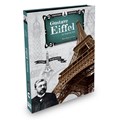
Gustave eiffel - la tour eiffel
Ref. 92266620
La livraison s'effectue devant votre domicile (à l'entrée de votre immeuble, devant le portail de votre maison). Découvrez toutes les conditions d'expéditions et modes de livraison
1 - Je choisis mes articles et le magasin de retrait sur natureetdecouvertes.com en cliquant sur RETIRER EN MAGASIN dans la fiche article. 2 - Je valide ma commande et je paye en ligne. 3 - Je reçois un sms et un e-mail de confirmation dès que ma commande est prête en magasin (disponible sous 1H, dans la limite des horaires d'ouverture du magasin). 4 - Je récupère ma commande en magasin sous 4 jours ouvrés, sans faire la queue en caisse ! En savoir plus
- Vendu et expédié par Les Jouets En Bois
- Livraison chez vous entre le 25/04/24 et le 26/04/24 Livraison offerte dès 89,00 €
- Satisfait ou remboursé
Gustave Eiffel : La Tour Eiffel. Un livre maquette de la gamme "Scientifiques et inventeurs".
Symbole de Paris par excellence, la tour Eiffel est l’un des monuments les plus célèbres du monde. Il représente l’harmonie parfaite entre l’art et la technique. La tour fut conçue par l’ingénieur Alexandre-Gustave Eiffel en 1889 : lis son histoire, découvre comment il en est arrivé à construire cet incroyable monument et amuse-toi à construire la maquette 3D très détaillée de 53 cm de haut !
Tous les livres et livres-jeux pour enfant de la marque Sassi Junior sont fabriqués à partir de papier recyclé ou issu de la gestion durable des forêts, puis imprimés avec des encres écologiques. Le contenu de ces livres est volontairement en lien direct avec les grands enjeux écologiques actuels, visant à sensibiliser les plus jeunes aux grandes questions qui se posent au quotidien : l’environnement, la nature, la solidarité envers son prochain, le respect pour les biens collectifs. Ainsi, tout en lisant, tout en jouant, l’écologie devient une seconde nature, conjuguant divertissement, créativité et soif d’apprendre, envie de découvrir mais aussi plaisir de jouer et d’être ensemble.
L ire n’a jamais été aussi facile, aussi utile, aussi instructif… en un mot, aussi naturel !
Cet article ne convient pas aux enfants de moins de 3 ans.
Age minimum recommandé : 8 ans
Age maximum recommandé : 12 ans
- Référence 92266620
Scientifiques et inventeurs
Symbole de Paris par excellence, la tour Eiffel est l’un des monuments les plus célèbres du monde. Il représente l’harmonie parfaite entre l’art et la technique. La tour fut conçue par l’ingénieur Alexandre-Gustave Eiffel en 1889 : lis son histoire, découvre comment il en est arrivé à construire cet incroyable monument et amuse-toi à construire la maquette 3D très détaillée
E. Tomè, A. Borgo, M. Gaule, N. Fabris
Sassi Junior
9788868605445
Maquette 3D de la Tour Eiffel
Top 10 du rayon Jeux de construction
- Kapla - Jeu de construction
- Voiture à air comprimé
- Kapla défi
- Jeu de parcours en 3D
- Circuit à billes falaise quadrilla hape
- Voiture eau salee thunderbird
- Master builder set hape 62 pièces
- Mini trigonos - small
- Biplan solaire en bois à construire
- Grand circuit billes cyclone quadrilla
Click & collect
Gratuit sous 1h
Livraison offerte
Dès 49 € d’achat*
Retours gratuits
sous 30 jours*
Paiement sécurisé
CB, Paypal, Paiement en 3x

IMAGES
VIDEO
COMMENTS
Livraison offerte dès 89,00 €. Satisfait ou remboursé. Description. Constructor Pro - Tour Eiffel 5 en 1 (618 pièces). Un jeu de construction intemporel fabriqué en métal chromé, avec des pièces en plastique colorées, dont l'assemblage se fait au moyen de vis et d'écrous. 100% fabriqué en Europe.
Avec cette boîte de 250 pièces tu pourras facilement construire la Tour Eiffel de Paris. La tour Eiffel est de 45 cm de haut. Des heures de plaisir garanties. Pour les enfants à partir de 8 ans et plus. Ce jeu de construction éducatif est conçu pour que les enfants puissent exercer leurs compétences pratiques, leur imagination et leurs ...
Vendu et expédié par Nature & Découvertes. Retours gratuits. Sous 30 jours. Description. Construction facile et guidée. Pour tous niveaux. Revivez la formidable épopée de la construction de la Tour Eiffel en réalisant votre propre exemplaire du monument historique le plus célèbre de Paris. ce coffret contient 105 planchettes Kapla en ...
Empilable en bois, Tour Eiffel. Réf. : 2405. Vilac est très fier de ce partenariat avec la Tour Eiffel qui nous a confié ce projet conçu en collaboration avec une jeune designer pleine de talent. Un empilable en bois amusant pour reconstituer la Tour Eiffel parée de belles couleurs ou pour la déstructurer suivant l'imagination de chaque ...
Jeu de construction magnétique avec des petits bâtons aimantés qui demande de la dextérité, de la patience et de la minutie ! 🧲La tour Eiffel construite ave...
Cette activité est parfaite pour développer l'imagination et la construction visuo-spatiale. Peinture à l'eau. Cette tour Eiffel est fabriquée en bois certifié FSC®, issu de forêts gérées durablement. A partir de 4 ans. Infos produit. Dimensions. 17,7 x 17,7 x 30,4 cm. Matière.
Pour construire la tour Eiffel, il est préférable d'utiliser la TomTect 1000. TomTect 500. Toutes les longueurs de planches sont disponibles dans la TomTect 500. Les nouveaux "triple charnières" vous permettent de relier trois planches ensemble. Vous pourrez donc créer et imaginer de nombreuses formes et objets.
Elle n'est pas encore nommée " TOUR EIFFEL " mais " LA TOUR DE 300 METRES " par le constructeur EIFFEL. Les pièces sont en bois peint au pochoir et carton. Le jeu est complet de toutes ces pièces et ensuperbe état. ( quelques petits défauts sans importance au regard de la rareté de ce jeu de construction. Il s'agit de la seconde et plus ...
It took just two years, two months and five days to build the Eiffel Tower. Construction work began in January 1887 and was finished on 31 March 1889. A record speed considering the rudimentary means available at that time. The assembly of the Tower was a marvel of precision, as all the chroniclers of the period agreed.
Bonjour à tous !Aujourd'hui on se retrouve pour une nouvelle vidéo et cette fois, c'est un monument mythique que nous avons construit pour vous pas à pas : l...
Step back in time to the awe-inspiring construction of the Eiffel Tower with our latest video! Discover the remarkable story behind Gustave Eiffel's archite...
Mise à jour : L'Adventure Game n'est plus disponible depuis le 6 janvier 2020. En quoi ça consiste ? Amateurs d'escape games, adventures games ou autres jeux d'énigmes, venez tester le jeu « Le dossier secret de la tour Eiffel » conçu avec les auteurs du spectacle musical "La Tour de 300 mètres".Gratuit, accessible à tous (adultes, adolescents et enfants aidés de leurs parents ...
The Design of the Eiffel Tower. The plan to build a tower 300 metres high was conceived as part of preparations for the World's Fair of 1889. Bolting the joint of two crossbowmen. (c): Collection Tour Eiffel. The wager was to " study the possibility of erecting an iron tower on the Champ-de-Mars with a square base, 125 metres across and 300 ...
For each puzzle, you will need to enter a pair of numbers in the boxes provided in the booklet. They will help you to decipher the final riddle. Once all riddles are solved on the 1st floor, go to the gardens of the Eiffel Tower. This is where the final puzzle will be played! Follow the instructions on the booklet.
La Tour Eiffel, symbole emblématique de la France et de Paris, est admirée par des millions de visiteurs chaque année. Cependant, ce monument emblématique qui suscite l'admiration aujourd'hui était autrefois au centre de controverses passionnées lors de sa construction. Dans cet article, nous explorerons les oppositions historiques à l'édification de la Tour Eiffel et découvrirons ...
Ce coffret contient un livret d'instructions détaillé en 4 langues avec guide montage, présentation de la Tour Eiffel, découverte de KAPLA et idées de constructions; ainsi que 105 planchettes KAPLA dont 1 planchette tricolore inédite, 4 planchettes sérigraphiées 'KAPLA' et 100 planchettes 'nature'. Ce coffret La Tour Eiffel de KAPLA ...
The most notable of all the Peterhof fountains is spectacular and majestic Grand cascade. This gilded splendor includes 255 sculptures, bas reliefs and other architectural structures, as well as 64 fountains with 138 water jets soaring skyward. The focus of the entire composition is the famous gilded "Samson tearing the lion's mouth", and ...
C'est à l'occasion de l'Exposition Universelle de 1889, date qui marquait le centenaire de la Révolution française qu'il a été décidé de construire une tour de 300m.. Les premiers coups de pelle sont donnés le 26 janvier 1887. Le 31 mars 1889, la Tour achevée en un temps record -2 ans, 2 mois et 5 jours- s'impose comme une véritable prouesse technique.
Peterhof tour Pushkin tour Hermitage tour Private boat tour. Travel services. Visa support Airport transfers Shore excursions Custom tours Concierge service. Get in touch with us: +7 911 834 83 39. [email protected]. 199178, 12th line of Vasilievskiy Island, 13, St.Petersburg, Russia.
Top 20 St. Petersburg attractions and experiences St. Petersburg has a true wealth of attractions and experiences to offer travelers, from spectacular Imperial palaces to quirky and absorbing museums, from boat trips along the city's majestic rivers and canals to walks in the footsteps of St. Petersburg's literary and artistic greats.
By Bertrand Lemoine. From the agreed upon principle of a Universal Exhibition for 1889 and the idea of a 1,000-foot (300-meter) tower accepted at the end of 1884, Gustave Eiffel had the project studied in detail by his colleagues. When a competition for ideas was launched on May 1, 1886 for the major buildings of the Exhibition, his project was ...
Mayor Welch's City Hall On Tour series is family-friendly. The Recreation Centers will be open for normal business, so youth programming will be available throughout the evening. Upcoming Tour Stops Tour Stop #2. June 12, 2024 5:30-7:30 p.m. St. Petersburg College Gibbs Campus 6605 5th Ave. N. Tour Stop #3. September 18, 2024 5:30-7:30 p.m.
Livraison offerte dès 89,00 €. Satisfait ou remboursé. Description. Gustave Eiffel : La Tour Eiffel. Un livre maquette de la gamme "Scientifiques et inventeurs". Symbole de Paris par excellence, la tour Eiffel est l'un des monuments les plus célèbres du monde. Il représente l'harmonie parfaite entre l'art et la technique.